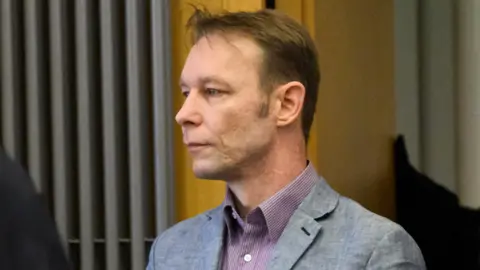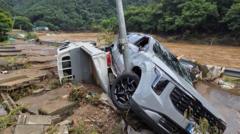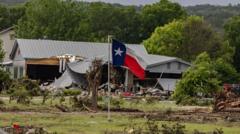Researchers are harnessing cutting-edge DNA technology to improve the identification process for missing persons, drawing on the painful lessons from conflicts around the globe. With significant refinements in DNA sequencing methods, scientists can now work with even the most deteriorated remains, advancing a mission fueled by urgency and compassion. For instance, forensic scientists at Vietnam's Institute of Biotechnology are utilizing these new techniques to analyze bone samples from unidentified soldiers of the Vietnam War, a challenge amplified by the natural conditions that degrade remains over time.
The importance of these advancements is heightened amid the backdrop of global crises. From the ongoing conflicts in Ukraine, Sudan, and Myanmar to the devastating impacts of climate change, there is an increasing number of individuals who remain unaccounted for. Next-generation sequencing technology has developed to the point where it can segregate and study millions of genetic fragments, which include vital single nucleotide polymorphisms, or S.N.P.s, essential for identifying genetic linkage to living relatives.
This progress has garnered attention from international bodies such as the International Commission on Missing Persons, which was established to tackle the unaddressed issue of missing individuals post-conflicts. Their newfound strategies demonstrate a significant leap toward large-scale identification of missing persons. For example, recent findings in Vietnam show that even highly degraded bones can yield precise DNA profiles, allowing for accurate identification that was previously thought impossible.
Additionally, research by American scientists on World War II remains illustrates the universal applicability and potential impact of these innovations. As these technologies continue to evolve, families of the missing can draw hope from a future where they may finally receive answers and closure, restoring the identities of lost loved ones once thought irretrievable.
Through the relentless pursuit of technological advancement, the quest for identifying the missing is gaining momentum, driven by a collective desire to mend the broken connections of families and communities worldwide affected by loss and absence.
The importance of these advancements is heightened amid the backdrop of global crises. From the ongoing conflicts in Ukraine, Sudan, and Myanmar to the devastating impacts of climate change, there is an increasing number of individuals who remain unaccounted for. Next-generation sequencing technology has developed to the point where it can segregate and study millions of genetic fragments, which include vital single nucleotide polymorphisms, or S.N.P.s, essential for identifying genetic linkage to living relatives.
This progress has garnered attention from international bodies such as the International Commission on Missing Persons, which was established to tackle the unaddressed issue of missing individuals post-conflicts. Their newfound strategies demonstrate a significant leap toward large-scale identification of missing persons. For example, recent findings in Vietnam show that even highly degraded bones can yield precise DNA profiles, allowing for accurate identification that was previously thought impossible.
Additionally, research by American scientists on World War II remains illustrates the universal applicability and potential impact of these innovations. As these technologies continue to evolve, families of the missing can draw hope from a future where they may finally receive answers and closure, restoring the identities of lost loved ones once thought irretrievable.
Through the relentless pursuit of technological advancement, the quest for identifying the missing is gaining momentum, driven by a collective desire to mend the broken connections of families and communities worldwide affected by loss and absence.




















